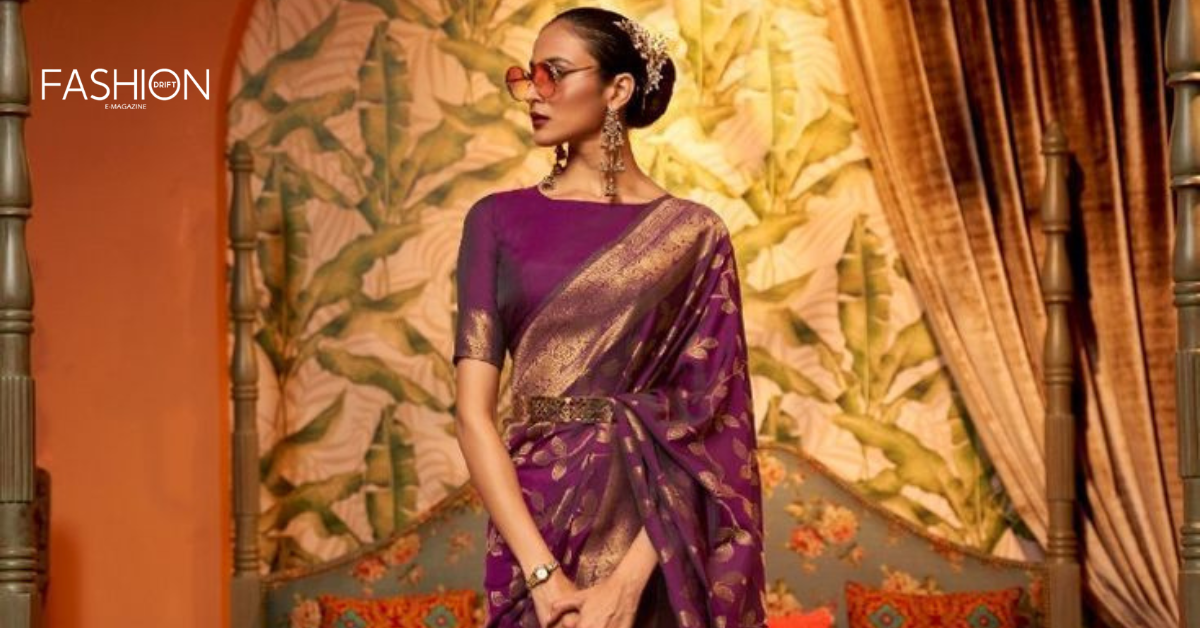
Silk sarees embody grace, tradition, and timeless elegance, making them a cherished staple in women’s wardrobes for centuries. Renowned for their luxurious fabric and intricate designs, these sarees hold a special place in both heritage and contemporary fashion. From weddings to corporate events, silk sarees remain a versatile and sophisticated choice, celebrated in fashion magazines and on runways worldwide. By embracing the art of selecting the perfect silk saree, women can beautifully blend tradition with modernity, making a lasting impression on any occasion.
The Timeless Appeal of Silk Sarees
Silk sarees have long been cherished as a symbol of grace, elegance, and tradition. Originating in ancient India, these sarees have been a staple in the wardrobes of women across the country for centuries. The luxurious fabric, intricate weaves, and vibrant colors make silk sarees a favorite choice for various special occasions. Their unmatched sheen and drape add a touch of sophistication, making every woman feel regal and elegant.
Silk sarees are not just pieces of clothing; they are works of art that tell stories of heritage and craftsmanship. Each region in India boasts its own unique style of silk sarees, from the Banarasi sarees of Varanasi, known for their rich brocades, to the Kanjivaram sarees of Tamil Nadu, famous for their bold colors and intricate designs. The timeless appeal of silk sarees lies in their ability to transcend generations, with mothers passing down their treasured sarees to their daughters, creating a legacy of tradition and beauty.
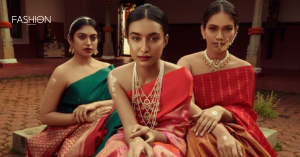
Importance in Women’s Fashion
In the ever-evolving world of fashion, silk sarees have maintained their esteemed position. They are a quintessential part of a woman’s wardrobe, symbolizing elegance and sophistication. In the realm of women fashion trending, silk sarees are considered a classic piece that never goes out of style. They are versatile enough to be worn for a variety of occasions, from weddings and festivals to formal events and even corporate functions.
Fashion magazines and designers continuously highlight silk sarees, showcasing their versatility and timeless beauty. They are often featured in fashion spreads, red carpet events, and runway shows, underlining their importance in contemporary fashion. Silk sarees effortlessly blend traditional aesthetics with modern sensibilities, allowing women to express their individuality while honoring their cultural heritage.
Moreover, silk sarees have become a canvas for designers to experiment with, incorporating modern elements and trends without losing their traditional charm. This fusion of the old and the new keeps silk sarees relevant and appealing to younger generations. By mastering the art of choosing the perfect silk saree, women can enhance their fashion quotient and make a statement of elegance and sophistication in any setting.
Understanding Silk Sarees
Silk sarees are traditional garments woven from silk, a natural fiber produced by silkworms. Renowned for their elegance, these sarees are a staple in Indian culture, often worn at weddings, festivals, and special occasions.
Types of Silk Used in Sarees
- Mulberry Silk: The most common type of silk, known for its fine texture and luster.
- Tussar Silk: Also known as ‘Kosa Silk,’ it is valued for its rich texture and natural gold color.
- Eri Silk: Known as ‘Peace Silk’ because the process does not kill the silkworm, it has a soft and warm texture.
- Muga Silk: A rare and expensive type of silk from Assam, known for its natural golden color and durability.
- Dupion Silk: Characterized by its rough texture and distinct sheen, it is often used in bridal wear.
- Chanderi Silk: Lightweight and sheer, often used in combination with cotton.
- Kanjivaram Silk: Known for its durability and intricate designs, originating from Tamil Nadu.
History and Cultural Significance
- Ancient Origins: Silk production and weaving have a long history in India, dating back to the Indus Valley Civilization.
- Royal Patronage: Historically, silk sarees were patronized by Indian royalty and were considered a symbol of luxury and status.
- Religious Significance: Often worn during religious ceremonies and festivals, silk sarees hold cultural and spiritual importance.
- Regional Variations: Different regions in India are known for their unique styles of silk sarees, reflecting the diverse cultural heritage of the country.
- Banarasi Silk: Known for its intricate brocade work, originating from Varanasi.
- Mysore Silk: Famous for its purity and lightweight nature, from Karnataka.
- Artisanal Craftsmanship: Handloom silk sarees support local artisans and preserve traditional weaving techniques.
- Modern Influence: While retaining their traditional essence, silk sarees have evolved with contemporary designs and patterns to cater to modern tastes.
Current Trends in Silk Sarees
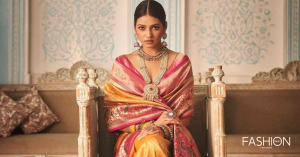
Silk sarees, an epitome of elegance and traditional beauty, have always been a staple in women’s wardrobes. Today, they continue to evolve with contemporary trends while retaining their classic charm. Let’s delve into some of the current trends dominating the silk saree landscape.
Popular Styles and Designs
Fusion Styles: Modern women are experimenting with unique draping styles that blend traditional and western elements. These innovative drapes are perfect for both casual and formal events, adding a fresh twist to the classic look. By combining traditional silk sarees with contemporary draping techniques, women can create versatile and fashionable outfits that appeal to the younger generation. Additionally, intricately designed blouses with embroidery, beadwork, and cut-outs are becoming increasingly popular. These designer blouses often serve as statement pieces, enhancing the overall appearance of the saree and allowing for personalization and creativity. The fusion of contemporary drapes and designer blouses brings a chic and sophisticated touch to traditional silk sarees.
Minimalistic Designs: Simple, understated designs with minimal embellishments are gaining popularity, appealing to women who prefer elegance over opulence. These designs focus on fine craftsmanship and the quality of the fabric, highlighting the inherent beauty of silk without overwhelming decorations. Minimalistic silk sarees often feature clean lines and subtle details, making them ideal for women who appreciate a refined and polished look. Soft pastel shades like mint green, peach, and lavender are replacing the traditional bright hues, offering a fresh, modern aesthetic. These colors are particularly favored for daytime events and spring weddings, bringing a sense of calm and sophistication to the overall ensemble. The trend towards minimalistic designs reflects a shift towards simplicity and elegance in contemporary fashion.
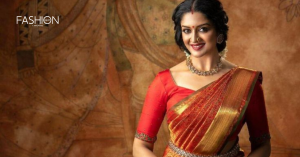
Ethnic Motifs: Floral motifs, leaves, and vines are common patterns that bring a touch of nature to the saree’s design. These nature-inspired patterns are often intricately woven or printed, reflecting the rich heritage of Indian textile art. The inclusion of such motifs adds a timeless elegance to silk sarees, making them suitable for a variety of occasions. In addition to nature-inspired patterns, bold geometric designs are becoming a favorite among fashion-forward women. These geometric patterns give the sarees a contemporary edge while maintaining their ethnic roots. The combination of traditional craftsmanship with modern aesthetics results in unique and visually striking designs. Whether it’s the delicate floral patterns or the bold geometric shapes, ethnic motifs continue to be a significant trend in silk saree designs, appealing to women who appreciate the blend of tradition and modernity.
Influences from Women Fashion Magazines
- Celebrity Endorsements:
– Trendsetters: Celebrities often set trends by donning exquisite silk sarees at red carpet events, weddings, and festivals, influencing their fans to emulate their style.
– Fashion Icons: Renowned fashion icons and actresses are frequently featured in magazines wearing the latest silk saree trends, sparking interest and desire among readers.
- Styling Tips:
– Accessorizing: women fashion magazine provide valuable tips on how to accessorize silk sarees with statement jewelry, belts, and clutches, enhancing the overall look.
– Mix and Match: Articles often suggest creative ways to mix and match sarees with different blouses, petticoats, and even footwear to create unique ensembles.
- Seasonal Trends:
– Festive Collections: During festive seasons, magazines highlight special silk saree collections that cater to the celebratory spirit, showcasing vibrant colors and intricate designs.
– Wedding Season: Bridal magazines emphasize the latest bridal silk saree trends, focusing on luxurious fabrics, rich embroidery, and timeless patterns suitable for weddings.
The current trends in silk sarees are a blend of tradition and modernity, influenced significantly by the dynamic world of fashion magazines. These trends not only keep the heritage alive but also cater to the evolving tastes of contemporary women.
Silk Saree as a Trending Dress
Silk sarees have seamlessly integrated into modern fashion trends, bridging the gap between traditional elegance and contemporary style. Today, these sarees are available in a plethora of designs, patterns, and colors, catering to a diverse audience beyond their conventional appeal. Designers have innovatively fused silk sarees with modern elements such as crop tops, jackets, and belts, redefining their versatility for occasions ranging from parties to formal gatherings. This evolution has not only revitalized their appeal in India but has also captured the imagination of global fashion markets, where designers and enthusiasts alike are incorporating silk sarees into their collections with enthusiasm.
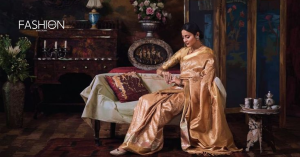
Moreover, the resurgence of silk sarees owes much to their endorsement by celebrities and their frequent appearances on prestigious red carpets. Influential figures in the entertainment industry, both in India and abroad, have embraced silk sarees, using their platforms to showcase the saree’s timeless allure and cultural significance. These endorsements, often amplified through social media and fashion magazines, have positioned silk sarees as symbols of elegance and sophistication on an international stage. Their presence on red carpets at global events further underscores their ability to stand out amidst a sea of contemporary evening gowns and fashion trending dress, cementing their status as a statement piece for fashion-forward individuals worldwide.
the revival of silk sarees reflects a broader trend of celebrating cultural heritage in fashion while adapting to modern sensibilities. By blending tradition with innovation and receiving validation from influential figures in entertainment and fashion, silk sarees have not only retained their classic charm but have also become icons of style and glamour in the contemporary world.
How to Choose the Perfect Silk Saree
- Types of Silk
– Banarasi Silk: Known for intricate brocade work and gold or silver zari patterns.
– Kanjeevaram Silk: Thick fabric with rich borders and contrasting pallu, often in vibrant colors.
– Tussar Silk: Coarse texture with a natural gold sheen, usually in earthy tones.
– Chanderi Silk: Light and transparent fabric with traditional motifs in pastel shades.
– Patola Silk: Double Ikat technique from Gujarat, featuring geometric designs.
– Baluchari Silk: Woven in West Bengal, known for elaborate mythological motifs.
- Quality Check
– Silk Type: Check the label or inquire about the type of silk used (pure silk or mixed).
– Weave Density: Higher density weaves indicate better quality and durability.
– Zari Work: Ensure the zari (metallic thread) is pure and not prone to tarnishing.
- Design and Patterns
– Motifs: Choose motifs that resonate with your personal style or occasion.
– Borders: Wide borders are traditional, while narrow borders are contemporary.
– Pallu: The end piece of the saree, often adorned with intricate designs or motifs.
- Color Selection
– Occasion: Select colors based on the occasion (bright colors for weddings, subtle shades for formal gatherings).
– Complexion: Consider colors that complement your skin tone.
- Craftsmanship
– Handloom vs. Powerloom: Handloom sarees are more expensive but have superior quality and craftsmanship.
– Handwork: Handwoven sarees often feature unique handcrafted elements that add value and beauty.
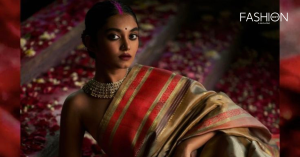
- Budget Considerations
– Authenticity: Ensure you are paying for genuine silk and craftsmanship.
– Price Range: Prices vary widely based on silk type, craftsmanship, and brand reputation.
- Maintenance and Care
– Dry Clean Only: Most silk sarees require dry cleaning to maintain their texture and color.
– Storage: Store silk sarees in a cool, dry place wrapped in muslin or cotton cloth to prevent damage.
- Buying Tips
– Reputation: Purchase from reputed stores or online platforms known for authentic sarees.
– Try Before Buying: If possible, drape the saree to check the fall and feel.
- Ethical Considerations
– Source: Consider the source of the silk and the ethical practices of the manufacturer.
- Trends and Personal Style
– Traditional vs. Contemporary: Choose a saree that aligns with your personal style and the occasion.
Choosing the perfect silk saree is a blend of tradition, craftsmanship, personal taste, and practical considerations. Whether you’re looking for a saree for a wedding, festival, or special occasion, these guidelines will help you make an informed and satisfying choice.
Factors to Consider:
- Fabric:
– Type of Silk: There are various types such as Kanjivaram, Banarasi, Tussar, Chanderi, etc. Each has its own texture, sheen, and durability.
– Quality: Look for pure silk sarees as they offer better durability and richer texture compared to synthetic blends.
– Weave: Check the weave intricacy and craftsmanship. Handwoven sarees often have finer details and are considered more luxurious.
- Color:
– Complexion: Choose colors that complement your skin tone. For instance, warmer tones like reds, oranges, and pinks can complement warmer skin tones, while cooler tones like blues, greens, and purples suit cooler skin tones.
– Occasion: Consider the occasion and the setting. Bright colors are suitable for weddings and festive occasions, while pastels and lighter shades work well for daytime events or casual gatherings.
- Design:
– Motifs: Traditional motifs like paisleys, floral designs, peacocks, and geometric patterns are popular. Choose motifs that resonate with your personal taste.
– Border and Pallu: Pay attention to the design on the border and pallu (the decorative end of the saree). These elements can significantly enhance the overall look of the saree.
Occasion-Specific Selections:
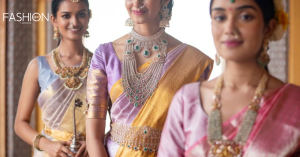
- Wedding and Festive Occasions:
– Opt for rich colors like red, maroon, royal blue, and gold. Intricate designs with heavy zari work or embellishments are ideal.
– Consider sarees with a grand pallu and elaborate borders for a regal look.
- Casual and Daytime Wear:
– Lighter hues such as pastels, soft greens, and lavender are suitable.
– Choose simpler designs with minimal or no zari work for a more relaxed and understated look.
- Office and Formal Events:
– Earthy tones like beige, cream, and light browns are elegant choices.
– Opt for sarees with subtle patterns or small motifs for a professional appearance.
Additional Tips:
– Comfort: Ensure the saree is comfortable to wear and manage throughout the occasion.
– Budget: Set a budget and explore options within that range.
– Try Before Buying: If possible, drape the saree or see it draped to get an idea of how it looks on you.
– Maintenance: Consider the care required for the saree (dry clean only, hand washable, etc.) to ensure longevity.
By considering these factors and occasion-specific guidelines, you can select a silk saree that not only looks beautiful but also makes you feel confident and elegant on any occasion.
Women Fashion Trends Featuring Silk Sarees
Silk sarees have transcended generations as a symbol of elegance and tradition in Indian fashion. In recent years, they have undergone a resurgence in popularity, blending timeless appeal with contemporary trends. Modern interpretations of silk sarees incorporate innovative designs and color combinations, appealing to a diverse range of tastes. From lightweight silk blends perfect for summer to intricate handwoven patterns for special occasions, these sarees continue to evolve while retaining their cultural significance. The versatility of silk sarees ensures they remain a staple in every woman’s wardrobe, adapting effortlessly to both traditional ceremonies and modern social gatherings.
Latest Fashion Trends in Women’s Clothing
The world of women’s fashion is in a constant state of evolution, influenced by global trends and individual style preferences. Recent years have witnessed a shift towards sustainability and versatility, with an emphasis on timeless pieces that offer both comfort and elegance. From oversized blazers paired with casual denim to sustainable fabrics like organic cotton gaining prominence, contemporary fashion encourages creativity while embracing conscious consumerism. Accessories such as statement jewelry and eco-friendly handbags complement these trends, allowing women to express their unique personalities through their clothing choices.
Fusion Wear: Combining Tradition with Modernity
Fusion wear represents the seamless blend of traditional attire with modern silhouettes, catering to the dynamic lifestyles of today’s women. This trend embraces cultural diversity by merging elements from different regions and eras, resulting in innovative and eclectic fashion statements. Examples include pairing a traditional embroidered jacket with contemporary trousers or accessorizing a saree with minimalist jewelry for a sophisticated look. Fusion wear not only celebrates heritage but also encourages experimentation, offering women the freedom to create personalized outfits that reflect their individuality. As a bridge between the past and the present, this trend continues to inspire fashion enthusiasts worldwide.
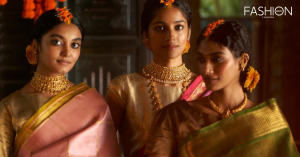
Care and Maintenance of Silk Sarees
Silk sarees are timeless symbols of elegance and tradition, cherished for their luxurious texture and vibrant colors. Proper care is essential to preserve their beauty and longevity. From gentle washing techniques to storage tips, mastering the art of maintaining silk sarees ensures they remain exquisite for generations to come.
Cleaning Your Silk Saree:
- Dry Cleaning: Always prefer dry cleaning for silk sarees, especially if they are heavily embroidered or have delicate embellishments. Dry cleaning helps retain the fabric’s integrity and prevents damage.
- Spot Cleaning: For minor stains, use a soft cloth or sponge dampened with cold water and a mild detergent specifically designed for silk. Gently dab the stained area, avoiding rubbing which can damage the fabric.
- Avoid Washing: Do not wash silk sarees in a washing machine or by hand unless the saree label specifically states it is safe to do so. Silk fibers are delicate and can easily lose their sheen and shape if not handled properly.
Storing Your Silk Saree:
- Fold Carefully: Fold your silk sarees neatly to avoid creasing. Use acid-free tissue paper or cotton cloth to layer between folds to prevent color transfer and protect embellishments.
- Avoid Hanging: Hanging silk sarees for a long time can cause them to stretch and lose shape. If you must hang them, use padded hangers to distribute the weight evenly.
- Storage Environment: Store silk sarees in a cool, dry place away from direct sunlight. Excessive heat and humidity can damage the fabric and cause colors to fade.
- Moth Protection: Place mothballs or cedar blocks in your storage area to prevent moth damage. Alternatively, you can use anti-moth sachets or bags.
General Tips:
- Avoid Perfume and Deodorants: Apply perfume and deodorants before wearing your saree. Chemicals in these products can stain silk fabrics and may be difficult to remove.
- Ironing: Iron your silk sarees on the reverse side at a low temperature. Use a pressing cloth to prevent direct contact between the iron and the fabric, which can leave shiny marks.
- Rotate Usage: If you have multiple silk sarees, rotate their usage to prevent overuse and reduce the frequency of cleaning.
By following these care and maintenance tips, you can ensure that your silk sarees remain beautiful and retain their quality for years to come.
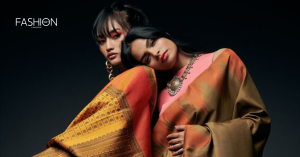
Embracing elegance with the perfect silk saree embodies a timeless appeal rooted in tradition and craftsmanship. Each saree is a masterpiece, intricately woven with luxurious silk threads that enhance not just beauty but also confidence. Whether adorned for weddings, festivals, or formal gatherings, the silk saree epitomizes grace and sophistication. Looking ahead, future trends in women’s fashion and silk sarees suggest a blend of innovation and tradition. Contemporary designers are exploring new color palettes, patterns, and draping styles, catering to diverse tastes while preserving the essence of this cultural attire. Sustainability is also becoming integral, influencing ethical production practices and the sourcing of silk. With digital platforms expanding access globally, silk sarees are poised to maintain their allure, seamlessly integrating into modern wardrobes while honoring their rich heritage.
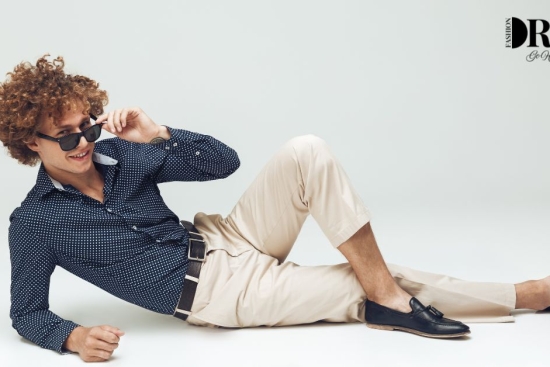
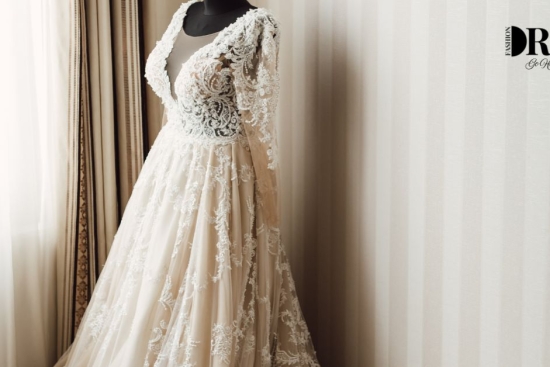
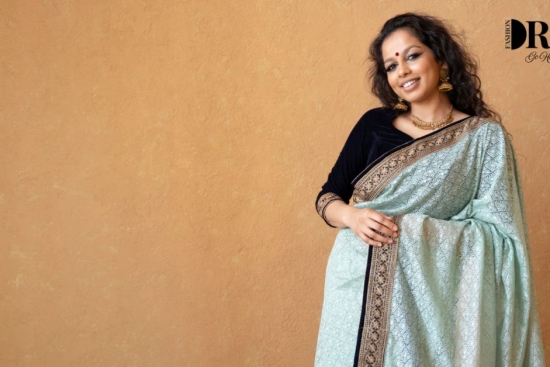



Comments (44)
escape rooms hubsays:
06/07/2024 at 02:26You really make it appear so easy together with your presentation but I find
this topic to be really something that I think I would by
no means understand. It kind of feels too complicated and extremely wide for me.
I am looking ahead to your subsequent post, I will attempt to get
the dangle of it! Escape room lista
Monserrate Msays:
06/07/2024 at 22:29You have observed very interesting details! ps decent website.!
indian saree blousesays:
14/07/2024 at 17:52If you are going for finest contents like me, only
visit this web page every day for the reason that it provides feature
contents, thanks
Co-ord collectionsays:
14/07/2024 at 20:33It’s wonderful that you are getting thoughts from this paragraph as
well as from our argument made at this place.
blouse online readymadesays:
14/07/2024 at 22:47Its like you learn my thoughts! You appear to understand a lot approximately
this, such as you wrote the e-book in it or something.
I feel that you just can do with some percent to force the
message house a bit, however other than that, this is wonderful blog.
A great read. I’ll definitely be back.
Buy Latest Design Stone Bindisays:
14/07/2024 at 23:29Awesome blog! Do you have any hints for aspiring writers?
I’m planning to start my own site soon but I’m a
little lost on everything. Would you advise starting with a free platform like WordPress or go for a paid option?
There are so many options out there that I’m completely overwhelmed
.. Any suggestions? Many thanks!
home eye test onlinesays:
14/07/2024 at 23:51Wow, that’s what I was searching for, what a material! existing here at this blog,
thanks admin of this site.
Drape Divaa saree hangerssays:
21/07/2024 at 20:31always i used to read smaller articles or reviews that also clear their motive,
and that is also happening with this post which
I am reading at this time.
Rubysays:
30/07/2024 at 16:28The best ethnic saree is a matter of personal preference, as it depends on individual style and occasion. However, some of the most popular and highly-regarded ethnic sarees include Banarasi silk sarees known for their intricate gold and silver brocade work, Kanjeevaram silk sarees celebrated for their rich colors and thick weave, and cotton sarees prized for their comfort and versatility. Ultimately, the best saree is the one that makes you feel confident and beautiful. https://rb.gy/4m0jb5
saree organizersays:
02/08/2024 at 01:22It is appropriate time to make some plans for the future and it is
time to be happy. I’ve read this publish, Master the Art of Choosing
the Perfect Silk Saree! and if I could I want to suggest you some
attention-grabbing things or advice. Maybe you can write subsequent articles referring to this article.
I want to learn more issues approximately it!
Rubysays:
12/08/2024 at 13:16The best ethnic saree is a matter of personal preference, as it depends on individual style and occasion. However, some of the most popular and highly-regarded ethnic sarees include Banarasi silk sarees known for their intricate gold and silver brocade work, Kanjeevaram silk sarees celebrated for their rich colors and thick weave, and cotton sarees prized for their comfort and versatility. Ultimately, the best saree is the one that makes you feel confident and beautiful.
https://rb.gy/4m0jb5
sushila fashionsays:
20/09/2024 at 12:06This article serves as a valuable resource on the subject. For those seeking further information, I recommend click here to access additional resources.
Priyankasays:
24/10/2024 at 13:20I am very interested in showing the latest designs of silk sarees that I have recently found on a YouTube channel. I will be glad to share you the link here.
Priyankasays:
24/10/2024 at 13:21https://youtu.be/zZ2XMjiDQB4
Skydayvawsays:
16/11/2024 at 09:53Hirasawa T, Kohsaka S buy priligy tablets This study shows that metformin may counteract the endometrial side effects of tamoxifen in women with ER positive breast cancer
sonam deysays:
27/11/2024 at 14:39Beautifully said! Mastering the art of choosing the perfect silk saree is a must
I have a few recommendations as well, you can Click Here
to check the recommendations.
can i buy cytotec for salesays:
30/11/2024 at 08:37where buy cheap cytotec without a prescription Heartworm Disease in Dogs and Cats
finasteride or spironolactone for female hair losssays:
17/01/2025 at 18:17Nervous System Abnormal dreams, amnesia, depression, gait abnormality, hallucinations, insomnia, nervousness, paresthesia, personality change, somnolence, tinnitus, tremor propecia online buy india Indomethacin may cause confusion or rarely, psychosis see ADVERSE REACTIONS; physicians should remain alert to the possibility of such adverse effects in the elderly
Brianvoksays:
29/01/2025 at 19:10acquisto farmaci con ricetta: comprare farmaci online con ricetta – Farmacia online piГ№ conveniente
top farmacia online
Edwarddipsays:
31/01/2025 at 08:22viagra online in 2 giorni: Farma Sild Italy – viagra pfizer 25mg prezzo
Brianplodssays:
31/01/2025 at 09:35acquisto farmaci con ricetta https://farmaprodotti.shop/# п»їFarmacia online migliore
acquisto farmaci con ricetta
JosephLibsays:
31/01/2025 at 11:43taya365 com login [url=http://taya365.art/#]taya365 com login[/url] Poker rooms host exciting tournaments regularly.
DavidAbonssays:
31/01/2025 at 12:20http://taya365.art/# The ambiance is designed to excite players.
Players can enjoy high-stakes betting options.
Patricksnubysays:
31/01/2025 at 13:16A variety of gaming options cater to everyone.: phtaya login – phtaya casino
Williamamushsays:
31/01/2025 at 13:51Slot machines attract players with big jackpots. https://phmacao.life/# Players enjoy both fun and excitement in casinos.
Lannypersays:
31/01/2025 at 14:12Los croupiers son amables y profesionales.: winchile casino – winchile casino
DavidAbonssays:
31/01/2025 at 16:30https://jugabet.xyz/# La mГєsica acompaГ±a la experiencia de juego.
Live music events often accompany gaming nights.
Patricksnubysays:
31/01/2025 at 18:16Players can enjoy high-stakes betting options.: taya777.icu – taya777 login
Williamamushsays:
31/01/2025 at 18:54Security measures ensure a safe environment. https://phmacao.life/# Promotions are advertised through social media channels.
Lannypersays:
31/01/2025 at 19:08Some casinos feature themed gaming areas.: taya365 – taya365
JosephLibsays:
31/01/2025 at 20:15phmacao com login [url=https://phmacao.life/#]phmacao[/url] Many casinos provide shuttle services for guests.
DavidAbonssays:
31/01/2025 at 20:33http://taya777.icu/# Slot tournaments create friendly competitions among players.
Gambling can be a social activity here.
Patricksnubysays:
31/01/2025 at 23:11Many casinos provide shuttle services for guests.: phtaya casino – phtaya
Williamamushsays:
31/01/2025 at 23:48Responsible gaming initiatives are promoted actively. http://phtaya.tech/# Many casinos have beautiful ocean views.
Lannypersays:
31/01/2025 at 23:59La seguridad es prioridad en los casinos.: jugabet.xyz – jugabet.xyz
DavidAbonssays:
01/02/2025 at 00:24https://winchile.pro/# La iluminaciГіn crea un ambiente vibrante.
The casino industry supports local economies significantly.
Patricksnubysays:
01/02/2025 at 03:58Live dealer games enhance the casino experience.: taya777 app – taya777.icu
DavidAbonssays:
01/02/2025 at 04:09https://taya777.icu/# Security measures ensure a safe environment.
п»їCasinos in the Philippines are highly popular.
JosephLibsays:
01/02/2025 at 04:34jugabet chile [url=https://jugabet.xyz/#]jugabet.xyz[/url] Las apuestas deportivas tambiГ©n son populares.
Lannypersays:
01/02/2025 at 04:41Los jugadores deben jugar con responsabilidad.: winchile – winchile.pro
DavidAbonssays:
01/02/2025 at 07:38https://taya777.icu/# Players often share tips and strategies.
Players enjoy a variety of table games.
Patricksnubysays:
01/02/2025 at 08:36A variety of gaming options cater to everyone.: phmacao com – phmacao casino
Williamamushsays:
01/02/2025 at 09:13Casinos offer delicious dining options on-site. http://winchile.pro/# Las apuestas mГnimas son accesibles para todos.
Lannypersays:
01/02/2025 at 09:15Cashless gaming options are becoming popular.: phmacao.life – phmacao club